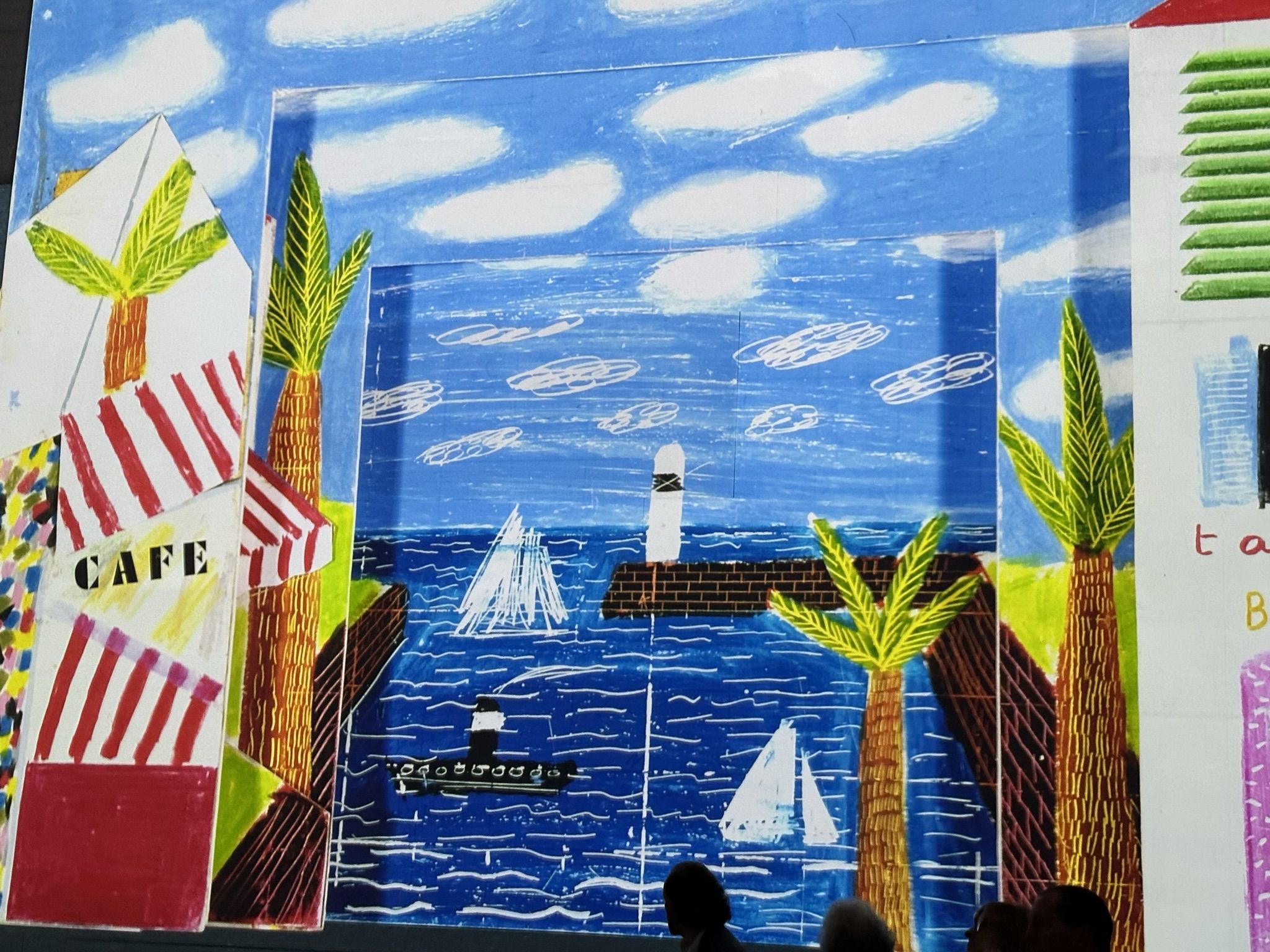Do you see what I see? The value of seeing things from different perspectives

This month, a dear friend and I had the privilege of visiting David Hockney’s exhibition: Bigger & Closer (not smaller & further away) in London’s The Lightroom. One of Hockney’s most famous and innovative ideas was his use of “joiners” or photo collages. He would take multiple photographs of a subject from different perspectives and then arrange them together to create a multi-perspective image. The Lightroom offers three different heights from where you can view the exhibition – way above the viewers, looking down on them, just above them as if on a balcony and finally, amongst them when it felt very immersive.
I wasn’t sure if I would enjoy David Hockney’s art, but this exhibition illustrates so well how our perception can change simply by moving to another position. There are life lessons in great art, and this was a timely reminder of how our own perceptions can remain fixed unless we are prepared to change our perspective. Imagine how useful it would be in our personal and business lives to consider alternative perspectives more readily?
I observe many of my client leaders holding a particular position about a challenging situation and feeling blocked or frustrated. This is often the result of not being ready to examine the situation from different points of view. Seeing other people’s perspectives is a valuable skill when seeking to build relationships, engage, influence and negotiate. That alternative perspective can promote empathy, understanding and effective communication. It allows you to gain insights into different viewpoints and appreciate the diversity of thoughts and experiences. Here are some strategies to help you develop the ability to see other people’s perspectives:
- Zoom out from a situation and see it from a neutral position – from above, as if being on a balcony or a helicopter and observe the situation from there, rather than being totally immersed in the situation at ground level.
- “Put Yourself in Their Shoes”: a cliché with a point. Imagine yourself in the other person’s position. Consider their experiences and their responses to better understand why they hold a particular viewpoint. What are you seeing now that you did not see from your perspective?
- Listening, not hearing. Practice “active listening” when engaging in conversations. Give your full attention to the speaker, avoid interrupting, and genuinely try to understand their thoughts and feelings without judgment. Encourage others to share their perspectives by asking open-ended questions that allow for more in-depth responses. Avoid leading questions or those that seek validation of your own opinions.
- Break out of your bubble. Expose yourself to diverse sources of information, opinions, and perspectives. Reading books, articles, listening to podcasts or other online content from different viewpoints can broaden your understanding of various issues.
- Debate to grow. Participate in constructive discussions and debates where people hold different opinions. Focus on learning from others rather than trying to win an argument.
- Feel what they feel. Cultivate empathy by putting yourself in others’ shoes and imagine what they might feel in a given situation. Recognize their emotions and validate their experiences.
- Challenge your own position. Be aware of your own biases and assumptions Try challenging them by considering alternative viewpoints and evidence that contradict your initial beliefs.
- Open the door: Be open to the possibility that your perspective may evolve or shift based on new information and insights from others.
- Learn from Diversity: diversity in all its forms including cultural, social, and ideological differences and even just people from different backgrounds can give us a broader understanding of the issues round us.
- Be In The Room: Develop mindfulness to stay present and aware during conversations, and not distracted by our own responses or other interference. Try to maintain a calm and open mindset, thinking rather than reacting.
Hockney’s Lightroom experience reminded me to consider how I view situations, people and challenges. Seeing other people’s perspectives is a continuous learning process.
Are there some challenges that you are facing right now? Could you find that breakthrough moment by considering different perspectives? We often acknowledge that bringing fresh eyes to a problem can be a great help. By considering other perspectives, you can bring those fresh eyes yourself.
If you get a chance, do visit David Hockney’s exhibition: Bigger & Closer (not smaller & further away) in The Lightroom. Let me know what you think!
Olwyn Merritt
